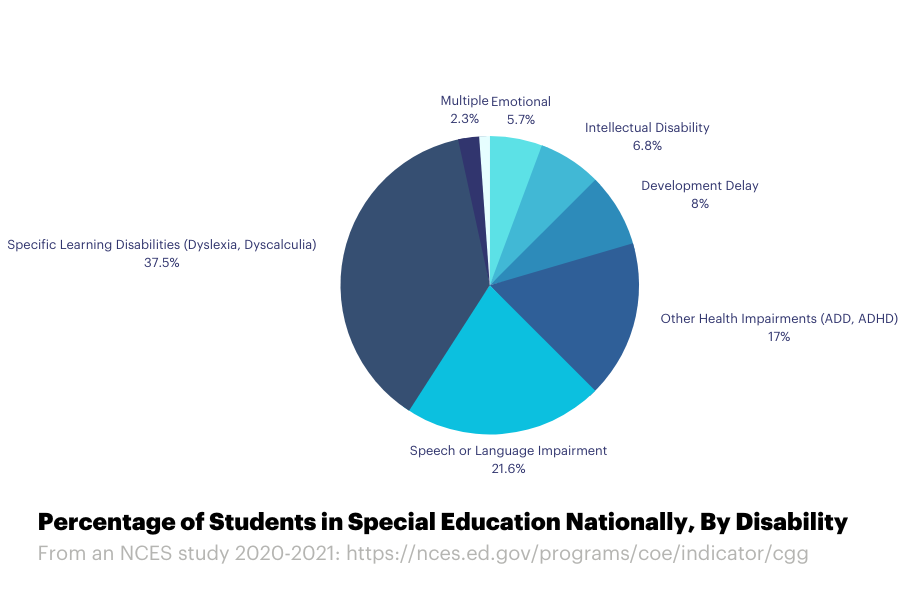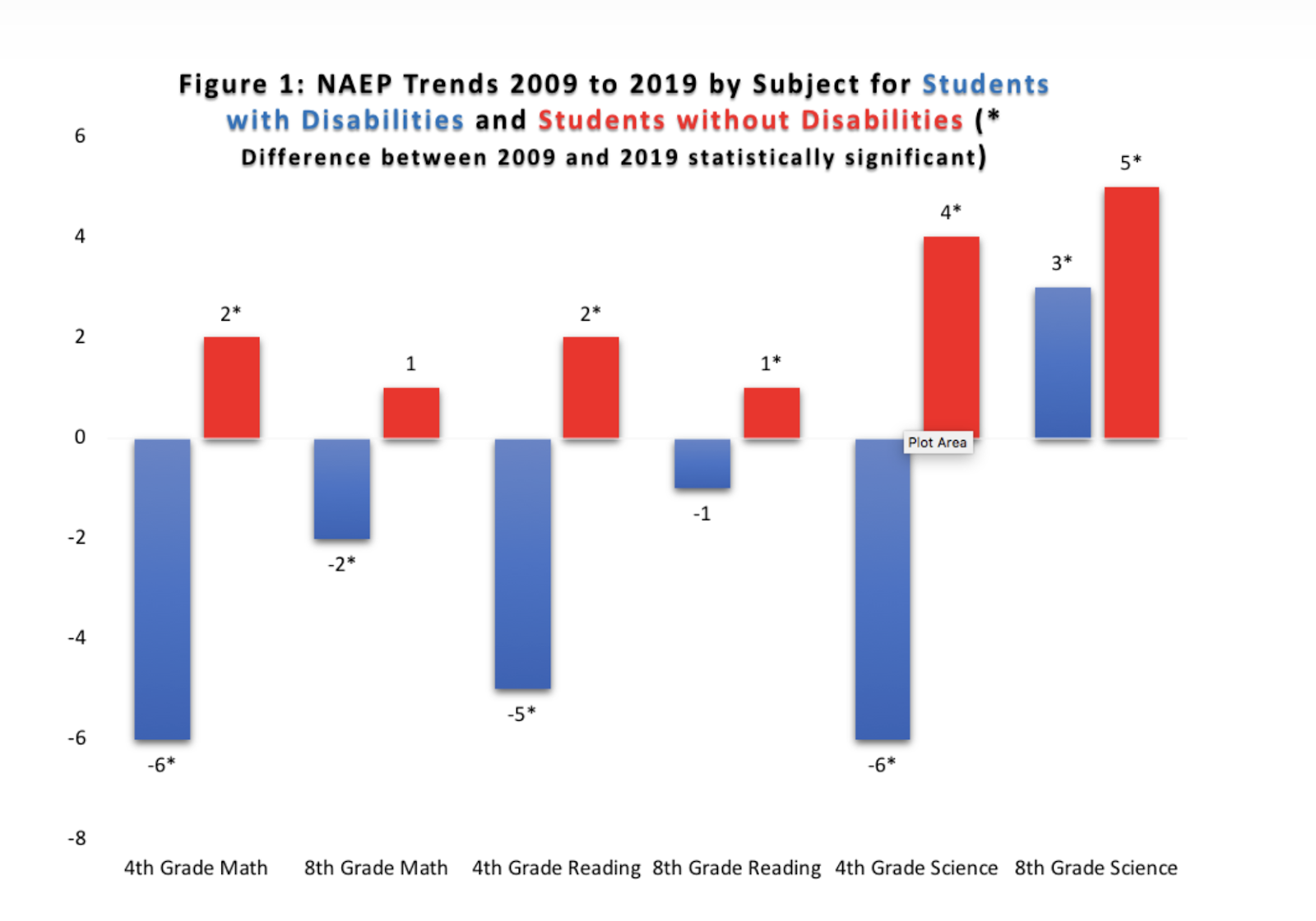This article was written by Karla Phillips-Krivickas and published by Getting Smart on May 9th 2023.
Our goal for students with disabilities is to lay a foundation for personalized learning pathways. But first, we must dismantle the longstanding myths that constructed the barriers we will have to tear down. So, let’s start with the facts.
FACT: 14% of all U.S. students have a disability.
And this doesn’t include the 2.7% of students who have accommodations provided under Section 504 of the U.S. Rehabilitation Act of 1973.
Why it matters.
An equity lens can’t ignore over 16% of our students, yet students with disabilities have had some of the lowest participation rates of any group for traditional college pathways, like dual enrollment or Advanced Placement. Pathway development is a critical lever for states to reach their attainment goals. States must make an intentional effort to ensure inclusion of students with disabilities.
FACT: At least 85% of students with disabilities can learn and achieve on grade level.
Why it matters.
The best estimates are that only 15% of students with disabilities have an intellectual disability. That means 85% of students with disabilities don’t, and–if given the services and supports to which they are entitled–can achieve at the same level as their peers. We must not allow outdated stereotypes to influence pathway access.

FACT: Students don’t outgrow their disabilities.
Why it matters.
The goal of K-12 learning is to equip students for life after high school. For students with disabilities, that must include understanding the accommodations they need and developing essential self-advocacy skills.
When high school students with disabilities access college and career pathways, it triggers the creation of the services and supports they will need for their transition plan to college or career. Unfortunately, the majority of students with disabilities leave high school without this experience. Most never enroll in any postsecondary education or show up unprepared.
FACT: The majority of students with disabilities spend most of their day in regular classrooms.
Why it matters.
64% of students with disabilities spent most (at least 80%) of their day in a regular classroom. The more time students with disabilities spend in general education classrooms the better, because inclusion improves both academic outcomes and postschool success.
Students with disabilities don’t need separate pathways. They need to be welcomed and included in existing traditional and innovative pathways.
FACT – Students with disabilities consistently experience the lowest academic outcomes.
Why it matters.
The evidence is clear that successful participation in college and career pathways improves outcomes.
The achievement gap for students with disabilities remains large in every measure. Even worse I fear we have become complacent and unfazed by the dismal outcomes. We’ve come to expect them.
This lower achievement begins at the earliest age and continues on in employment rates.
Students with disabilities’ scores on NAEP lagged 28 to 40 points behind their peers in 2022.

Successful participation in college and career pathways improves academic outcomes for all students–including those with disabilities. But since students with disabilities aren’t participating, outcomes remain stagnant for students with transition plans, according to mandatory state-submitted data.
Conclusion
As we strive to design new college and career pathways, we have the opportunity to start anew and make sure that commonly held misconceptions don’t derail these efforts. Now that you have the facts, I’m excited to see where they lead you.
No belief is more damaging in education than the misperception that children with disabilities cannot really succeed and shouldn’t be challenged to reach the same high standards as all children.
Arne Duncan, former U.S. Secretary of Education
This post is part three of the Uncovering Pathways for Students with Disabilities blog series. Read part one: Uncovering Pathways for Students with Disabilities.
Read part two: Building a Pathway Onramp: Transition Plan Design Guidelines